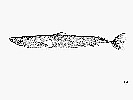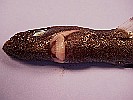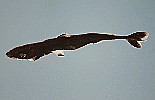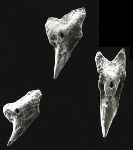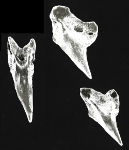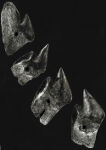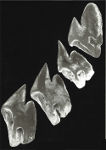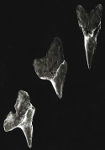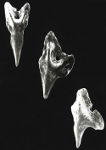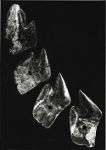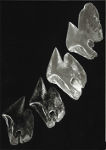Squaliolus laticaudus
Smith & Radcliffe, 1912
Spined pygmy shark
Classification: Elasmobranchii Squaliformes Dalatiidae
Reference of the original description
The squaloid sharks of the Philippine Archipelago, with descriptions of new genera and species. Proceedings of the United States National Museum, 41, 677–685
The squaloid sharks of the Philippine Archipelago, with descriptions of new genera and species. Proceedings of the United States National Museum, 41, 677–685
Image of the original description
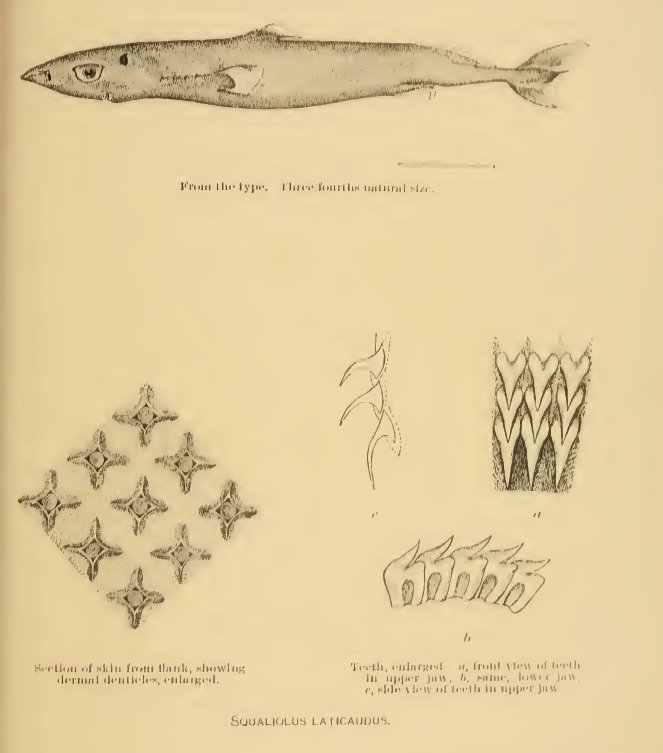
Squaliolus laticaudus Smith & Radcliffe, 1912

Squaliolus laticaudus Smith & Radcliffe, 1912
Synonyms / new combinations and misspellings
Euprotomicrus laticaudus, Euprotomicrus sarmenti, Squaliolus sarmenti
Euprotomicrus laticaudus, Euprotomicrus sarmenti, Squaliolus sarmenti
Types
Squaliolus laticaudus
Holotype: USNM: 70259; Paratype: USNM: 76679;
Squaliolus sarmenti
Holotype: FMNH: 58862;
Squaliolus laticaudus
Holotype: USNM: 70259; Paratype: USNM: 76679;
Squaliolus sarmenti
Holotype: FMNH: 58862;
Description :
Citation: Squaliolus laticaudus Smith & Radcliffe, 1912: In: Database of modern sharks, rays and chimaeras, www.shark-references.com, World Wide Web electronic publication, Version 12/2025
Please send your images of "Squaliolus laticaudus" to info@shark-references.com

Squaliolus laticaudus Smith & Radcliffe, 1912, © NOOA www.photolib.noaa.gov/

Squaliolus laticaudus Smith & Radcliffe, 1912, © NOOA www.photolib.noaa.gov/
Common names
 Zwerghai,
Zwerghai,  Tollo pigmeo espinudo,
Tollo pigmeo espinudo,  Squale nain,
Squale nain,  Dwarf shark,
Dwarf shark,  Spined pigmy shark,
Spined pigmy shark,  Spined pygmy shark,
Spined pygmy shark,  Cação-espinho,
Cação-espinho,  Tubarão-anão
Tubarão-anão
 Zwerghai,
Zwerghai,  Tollo pigmeo espinudo,
Tollo pigmeo espinudo,  Squale nain,
Squale nain,  Dwarf shark,
Dwarf shark,  Spined pigmy shark,
Spined pigmy shark,  Spined pygmy shark,
Spined pygmy shark,  Cação-espinho,
Cação-espinho,  Tubarão-anão
Tubarão-anão
Short Description
The spined pygmy shark Squaliolus laticaudus is a very small dogfish (about 25cm) with a large eye (diameter 73-86% of interorbital width), upper margin nearly straight; upper lip without papillae [544] [1388]. Color: dark with conspicuously light-margined fins [518] . Edge of fins with bright border (Ref. 43998). S. laticaudus is the type species of the genus which has the following distinctive features: fin spine on its first dorsal fin but not on its second dorsal fin; second dorsal fin long-based and low, about twice the length of first dorsal fin base; first dorsal-fin base closer to pectoral fins than to pelvic fins; and caudal fin nearly symmetrical, paddle-shaped, with subterminal notch present; low lateral keels on caudal peduncle . Body cigar-shaped; snout very long, bulbously conical but slightly pointed; mouth ventral; lips thin; teeth strongly different in both jaws, uppers small, narrow and erect cusps, lowers larger, blade-like and semi erect. Tooth rows 22-23/16-21. [518] [1388].
The spined pygmy shark Squaliolus laticaudus is a very small dogfish (about 25cm) with a large eye (diameter 73-86% of interorbital width), upper margin nearly straight; upper lip without papillae [544] [1388]. Color: dark with conspicuously light-margined fins [518] . Edge of fins with bright border (Ref. 43998). S. laticaudus is the type species of the genus which has the following distinctive features: fin spine on its first dorsal fin but not on its second dorsal fin; second dorsal fin long-based and low, about twice the length of first dorsal fin base; first dorsal-fin base closer to pectoral fins than to pelvic fins; and caudal fin nearly symmetrical, paddle-shaped, with subterminal notch present; low lateral keels on caudal peduncle . Body cigar-shaped; snout very long, bulbously conical but slightly pointed; mouth ventral; lips thin; teeth strongly different in both jaws, uppers small, narrow and erect cusps, lowers larger, blade-like and semi erect. Tooth rows 22-23/16-21. [518] [1388].
Distribution
Nearly circumtropical. Western Atlantic: off Bermuda, southern Brazil, and northern Argentina. Eastern Atlantic: off France and Madeira. Western Indian Ocean: off Somalia. Western Pacific: Japan, Taiwan and Philippines [3749], as well as Australia (Ref. 7300). Source: www.gbif.org
Nearly circumtropical. Western Atlantic: off Bermuda, southern Brazil, and northern Argentina. Eastern Atlantic: off France and Madeira. Western Indian Ocean: off Somalia. Western Pacific: Japan, Taiwan and Philippines [3749], as well as Australia (Ref. 7300). Source: www.gbif.org
Human uses
fisheries: of no interest
fisheries: of no interest
Biology
Probably ovoviviparous. Twelve mature eggs have been found in a single ovary of a mature female but this does not imply that large litters are produced [518]. Distinct pairing with embrace [17086]. An oceanic, wide-ranging, tropical pelagic species occurring near continental and insular land masses, sometimes over the shelves, but usually over the slopes . Displays vertical migrations on a diel cycle, seen at the bottom during the day and travels to 200 m at night. Feeds on deepwater squid, lanternfish, gonostomatids and idiacanthids, and probably follows its prey on their diel migrations.
Probably ovoviviparous. Twelve mature eggs have been found in a single ovary of a mature female but this does not imply that large litters are produced [518]. Distinct pairing with embrace [17086]. An oceanic, wide-ranging, tropical pelagic species occurring near continental and insular land masses, sometimes over the shelves, but usually over the slopes . Displays vertical migrations on a diel cycle, seen at the bottom during the day and travels to 200 m at night. Feeds on deepwater squid, lanternfish, gonostomatids and idiacanthids, and probably follows its prey on their diel migrations.
Remarks
shark-references Species-ID=6677;
shark-references Species-ID=6677;









